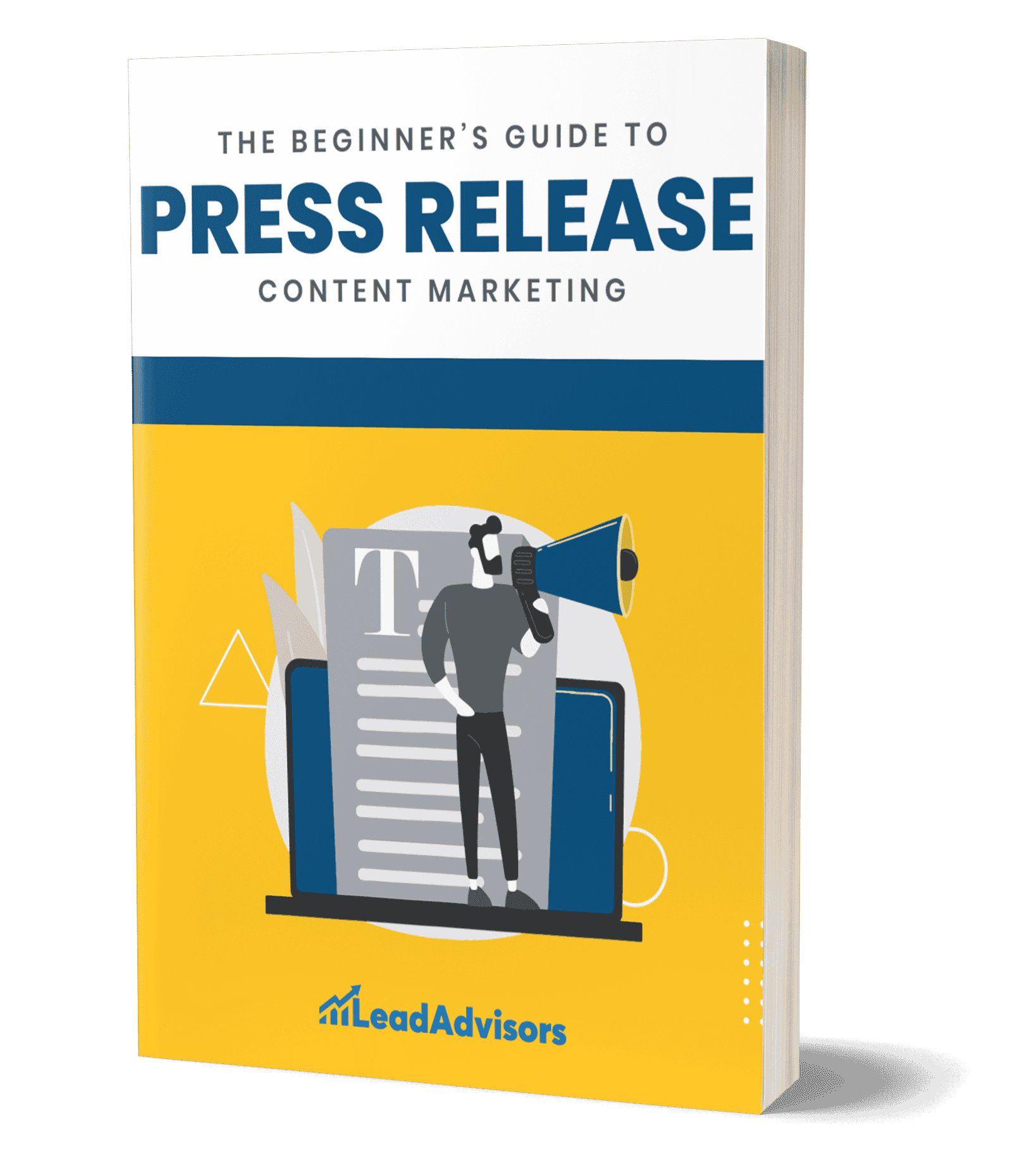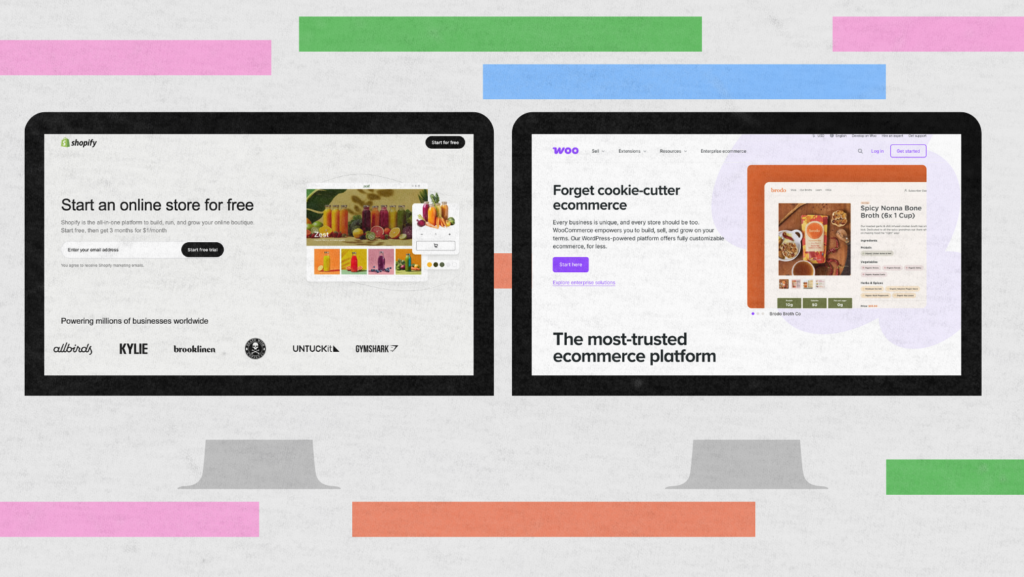Creative lead management is what basically determines sales success in 2025. Nevertheless, many sales teams continue to use spreadsheets, emails, and scattered notes in their operations, which causes them to lose vital lead data.
That is where lead management software comes in to help. A proper CRM lead management platform not only centralizes everything but also automatically captures, qualifies, and prioritizes every sales lead, while allowing subsequent follow-up and upgrade to the sales pipeline.
Research into this reveals that companies utilizing strong lead management tools achieve up to 30% more deal value, with their close rates increasing by 25%.
The guide provides a comprehensive understanding of the top CRM systems for lead management to consider in 2025, including a detailed comparison of functionalities, costs, and benefits to facilitate an easy selection by the team.
TL;DR:
In 2025, smart lead management drives sales success. The best CRMs automate lead capture, scoring, and follow-ups — helping teams close more deals faster.
Top Picks:
- HubSpot CRM – Best all-in-one option
- Pipedrive – Best visual pipeline tool
- Zoho CRM – Best for customization
- Salesforce – Best for large teams
- BIGContacts – Best for small budgets
- Freshsales – Best AI-powered CRM
- LeadSquared – Best for high-volume leads
- monday.com CRM – Best for flexibility
- Zendesk Sell – Best for mobile sales
- Creatio / Vtiger – Best for process-heavy teams
Pick a CRM that fits your workflow, automates tasks, and keeps your sales team focused on closing deals.
What is Lead Management, and Why It Matters
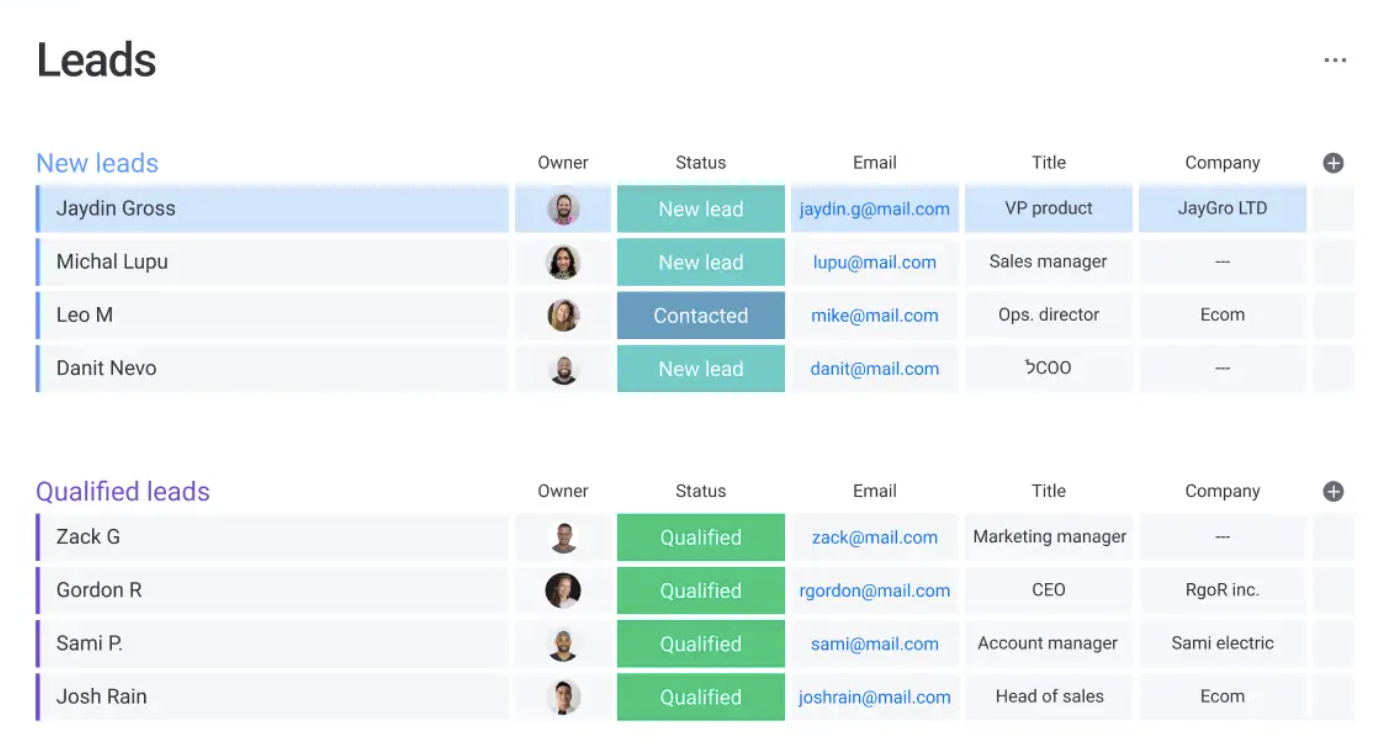
In fact, the primary purpose of lead management is to organize and monitor buyers who are likely to progress through each stage of the sales funnel, starting from the initial contact and culminating in deal closure. Lead management is the collaborative effort of marketing and sales teams in capturing leads, tracking behavior, and identifying who is most likely to make a purchase.
Typically, a lead management system includes seven important stages:
- Lead capture: through web forms, chatbots, or marketing automation platforms.
- Qualification: the identification of those prospects that fit the required criteria only
- Segmentation: classifying leads based on their interest or demographics.
- Lead scoring: to determine the most probable customer by assigning them a higher score.
- Distribution: passing on the leads to the respective sales representatives
- Nurturing: establishing a relationship through content and follow-ups
- Conversion: making the qualified lead into the actual customer
A well-implemented lead management software will bring harmony to all the stakeholders in the sales process, right from the moment of first contact to the handoff. On the other hand, if the software is not utilized effectively, teams will face duplicates, inappropriate routing, and sluggish responses that hinder genuine deals.
What is a Lead Management CRM?
A lead management CRM is fundamentally the tool through which you run your entire sales strategy. It is essentially a system that collects, organizes, and tracks all sales leads in one place, thus empowering your sales force to be more efficient in their responses and to achieve quicker conversions.

CRM solutions are more than just upgraded spreadsheets or advanced lead tracking software; they bring automation, insight, and a solid framework. Additionally, they integrate various marketing automation tools, lead scoring models, and communication channels to eliminate every opportunity for errors or oversights.
In short, it works by:
- Centralized database: Every communication with a lead — whether via email, phone call, or web form — is logged and presented through a single interface.
- Automation of lead assignments: It automatically provides the most qualified leads to the right sales executives.
- Prioritization and scoring: When applied in conjunction with behavior-driven scoring, AI prioritizes the leads most likely to be converted, thereby streamlining sales team efforts.
- Improved collaboration: Sharing data allows marketing and sales departments to stay in sync throughout the customer journey.
- Pipeline visibility: Top managers can easily track results, recognize challenges, and predict future trends.
In short, a CRM lead management system is essentially a business tool that provides complete control over the entire cycle, from initial contact to closure, thereby not only making lead management more efficient but also enhancing the level of productivity and quality of customer relationships.
Essential Features of a Lead Management CRM
Choosing the right lead management software begins with understanding which features truly make a difference. The best CRM lead management systems combine automation, visibility, and intelligence to help sales teams work smarter — not harder.
Here are the essentials every business should look for:
1. Lead Capture Automation
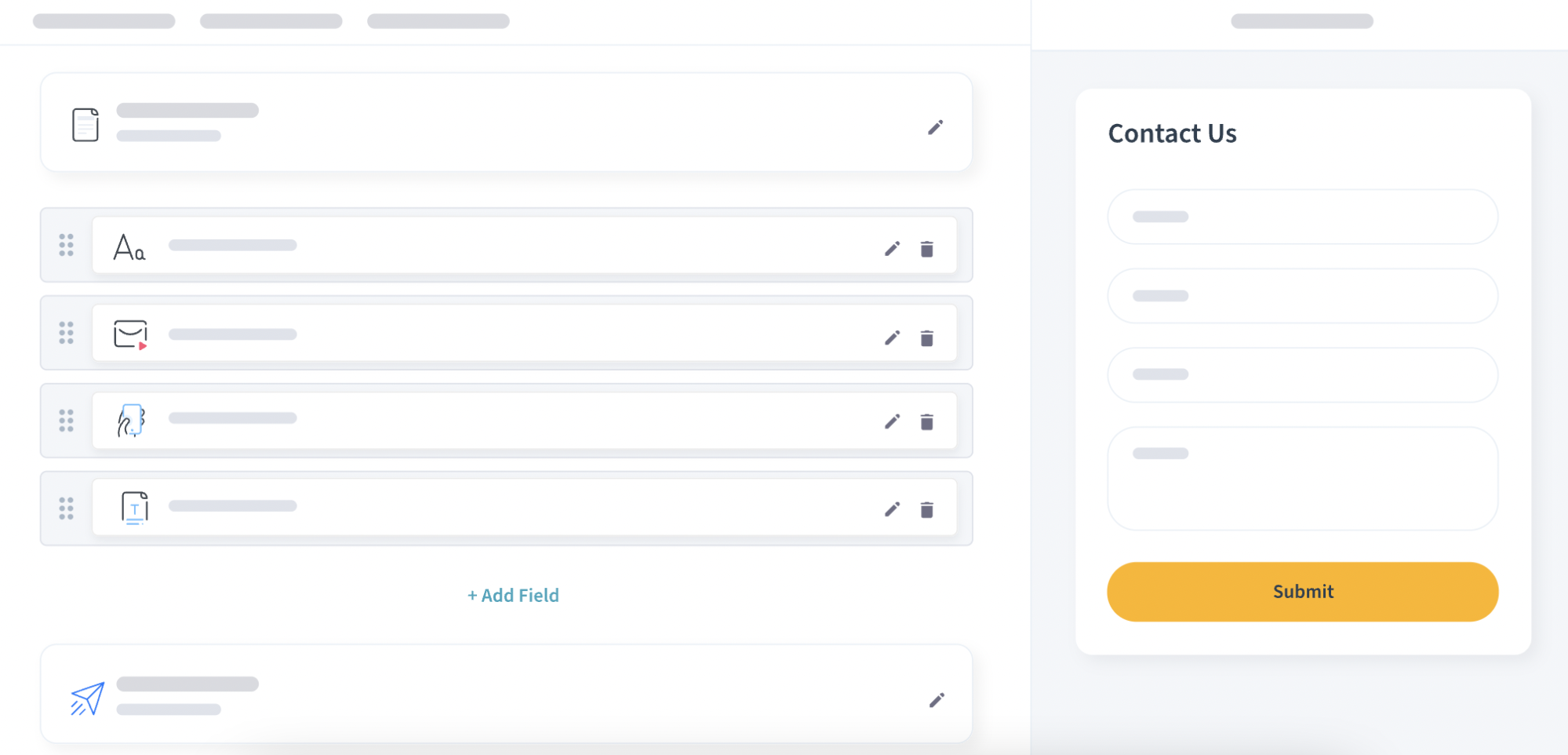
Automatically capture leads from web forms, chatbots, email inquiries, and social media. Seamless integrations prevent manual entry errors and ensure every sales lead is logged instantly. The proper setup guarantees no opportunity slips through the cracks — whether a lead comes from ads, referrals, or your website.
2. Lead Scoring
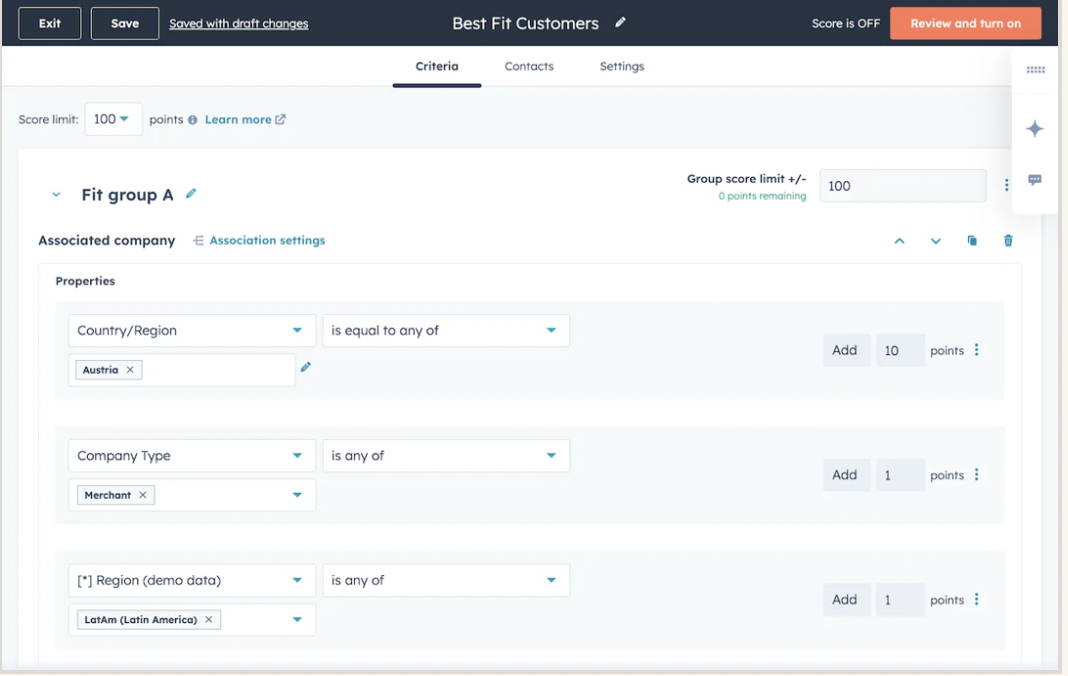
Utilize behavior- and fit-based lead scoring models (manual or AI-driven) to rank prospects based on their conversion potential. This helps sales reps prioritize qualified leads first. Advanced systems even adjust scores automatically as engagement levels change, providing your team with real-time visibility into buying intent.
3. Data Hygiene & Duplicate Prevention
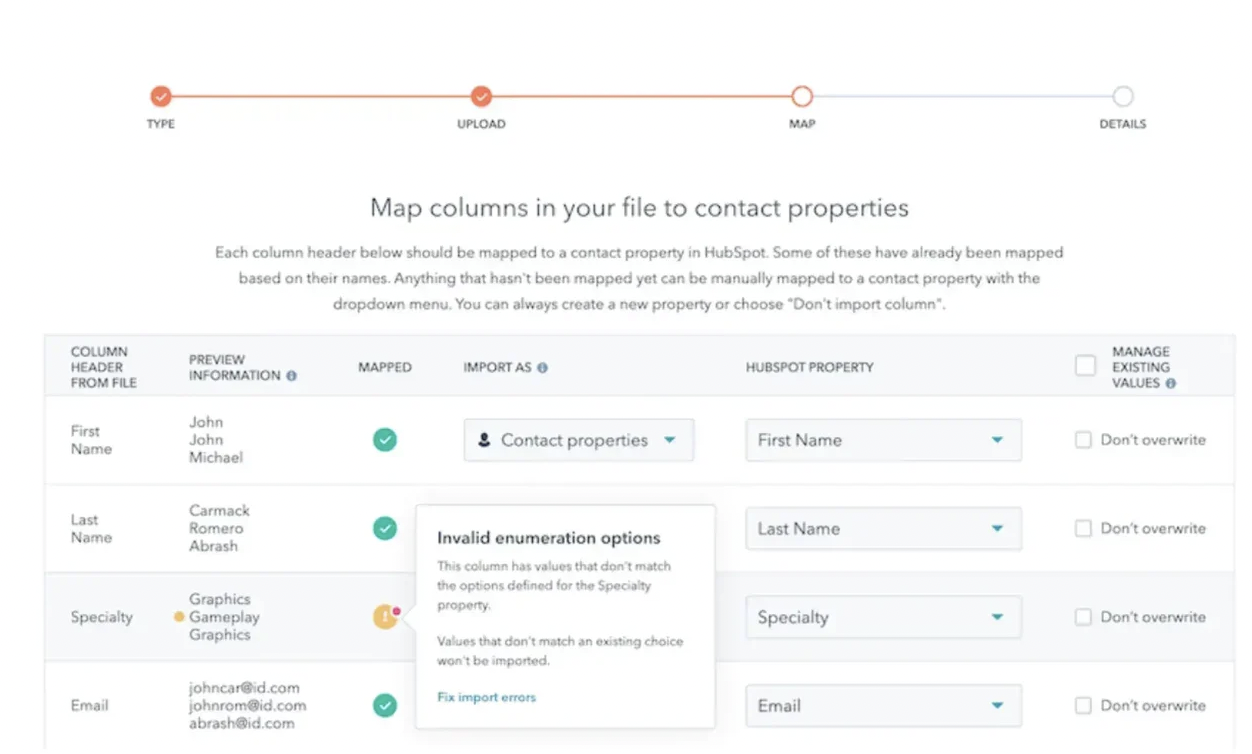
Good data means better results. Look for built-in tools that prevent duplicates, merge records, and automatically validate lead data. Clean records not only improve sales performance but also make reporting and forecasting far more accurate.
4. Lead Routing & Distribution

Speed matters. CRMs with intelligent lead routing assign inquiries to the right team using round-robin, territory, or performance-based logic. Instant alerts enable sales reps to follow up more quickly — a key advantage when every minute counts in competitive industries.
5. Pipeline Management
Track every deal visually. Drag-and-drop pipeline management boards make it easy to monitor progress, identify stalled opportunities, and improve overall sales performance. Clear pipelines keep sales teams focused on the following actions, reducing bottlenecks and missed handoffs.
6. Omnichannel Communication Tracking
Centralize every conversation — email, SMS, phone, or chat — in one timeline. This keeps your sales reps informed and creates a seamless handoff between team members. Unified communication ensures that no mixed messages are sent and builds consistent customer relationships across all touchpoints.
7. Automation & AI Support
From automatic reminders to predictive lead scoring, automation keeps your sales pipeline active even when your team is offline. AI-driven tools can even nurture leads automatically, analyzing engagement data to deliver the right message at the perfect time.
8. Reporting & Dashboards
Get valuable insights into conversion rates, lead sources, and revenue forecasts. Custom dashboards turn data into decisions. With real-time reports, managers can effectively coach sales reps and identify performance trends before they impact results.
9. Security & Compliance
Modern lead management systems must be GDPR- and CCPA-ready, with user permissions and audit trails built in. This not only protects sensitive lead data but also builds trust with clients and stakeholders.
10. Integrations
Your CRM should integrate seamlessly with marketing automation, email marketing tools, calendars, billing systems, and customer service software — providing a comprehensive view of your entire customer journey. A connected ecosystem eliminates silos between teams, ensuring your marketing and sales teams work from the same source of truth.
Top 10 CRMs for Lead Management in 2025 (At a Glance)
Choosing the best CRM for lead management depends on your team’s size, industry, and how you handle the lead management process. Each platform below excels at organizing lead data, automating follow-ups, and streamlining your sales pipeline, allowing sales teams to focus on closing deals instead of chasing spreadsheets.
| CRM | Best For | Starting Price | Key Features | Free Plan |
| HubSpot CRM | All-in-one inbound sales & marketing | Free | AI lead scoring, automation, chat & email tracking | ✅ |
| Pipedrive | Visual pipelines & automation | $14.90 / user / mo | Leads Inbox, Chatbot, Web Visitors | ✅ Trial |
| Zoho CRM | Custom workflows & scalability | $14 / user / mo | Lead routing, scoring, analytics | ✅ Trial |
| Salesforce | Enterprise-level automation | $25 / user / mo | Custom pipelines, AI insights, forecasting | ❌ |
| Zendesk Sell | Mobile-first sales teams | $19 / user / mo | Lead tracking, automation, reports | ✅ Trial |
| BIGContacts | Small teams & contact marketing | Free – $9.99 / mo | Email marketing, automation, reminders | ✅ |
| Freshsales | AI-assisted selling | $19 / user / mo | Built-in dialer, AI scoring | ✅ Trial |
| LeadSquared | High-volume routing | $25 / user / mo | Real-time assignment, multi-channel workflows | ✅ Trial |
| monday.com CRM | Custom boards & workflows | $10 / user / mo | Visual pipeline, automations | ✅ Trial |
| Creatio / Vtiger | B2B customization | $12 – $15 / user / mo | Low-code automation, analytics | ✅ Trial |
Each of these lead management software platforms supports a unique style of selling — from HubSpot’s lead management tools for inbound teams to Salesforce’s enterprise-grade automation. Whether you’re managing a lean startup or a global sales hub, there’s a CRM built to fit your workflow and budget.
Detailed Reviews of the Leading CRMs
1. HubSpot CRM – Best for All-in-One Growth
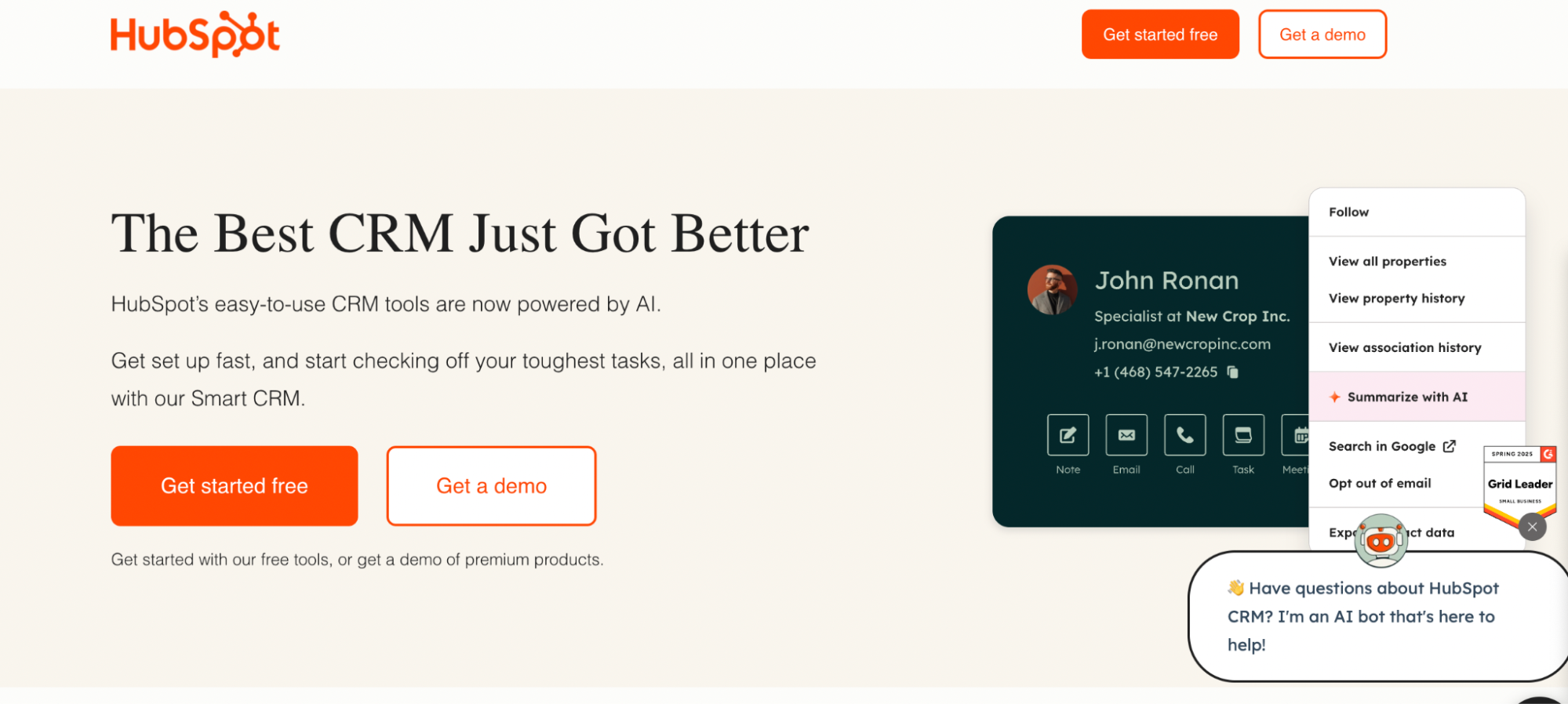
HubSpot CRM brings your marketing and sales teams together under one roof. It offers a unified timeline of every contact interaction, built-in lead scoring, and automatic routing from capture to close. Reviewers love its free tier and ease of use across small and mid-sized teams.
- Pros: Scalable, intuitive UX, deep integrations with lead management software, “free plan” option.
- Cons: Advanced automations and customization are only available in higher tiers, and paying per user can become expensive.
2. Pipedrive – Best for Visual Pipeline Management
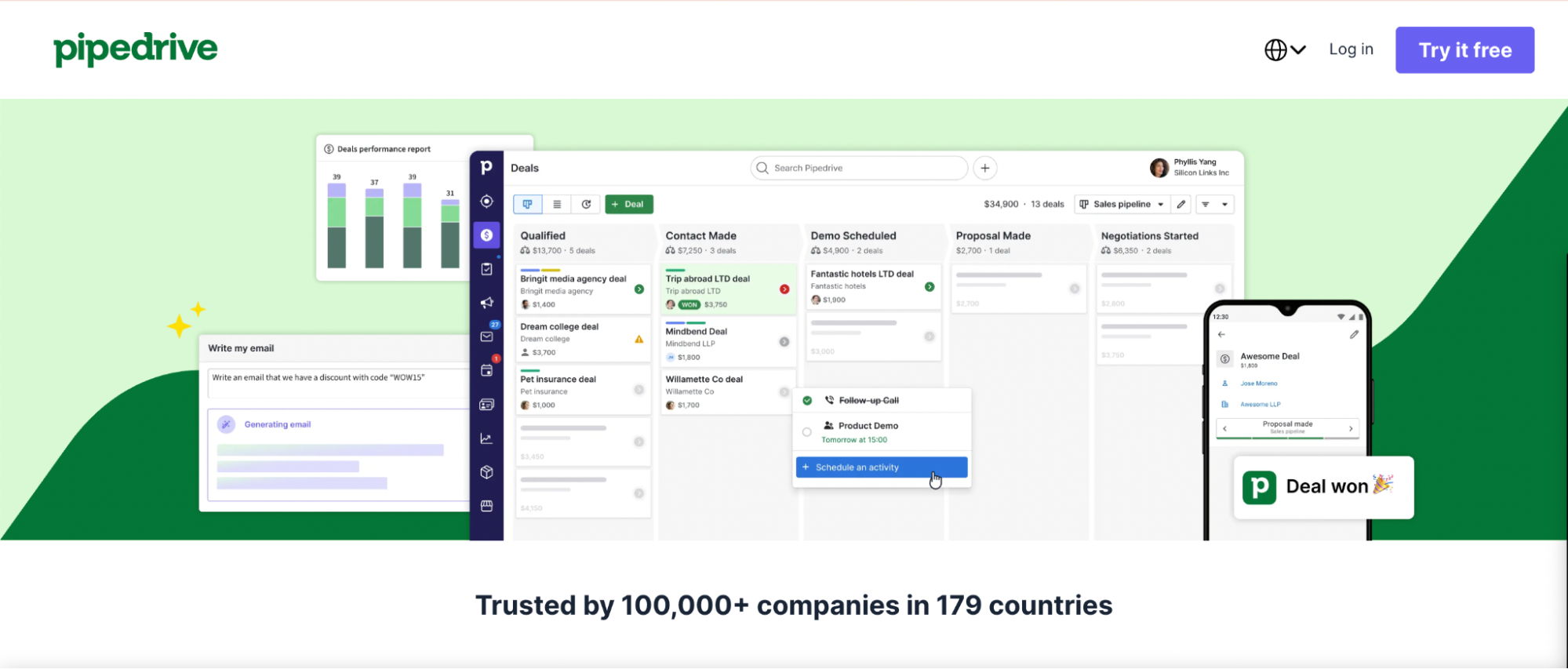
Pipedrive focuses on making the sales pipeline visible and actionable. Its drag-and-drop deal board, customizable stages, and pipeline view make it ideal for sales teams who want clarity in their sales process. Reviews highlight its strong performance for lead management and pipeline tracking.
- Pros: Easy to use, cost-effective for smaller teams, strong automation for lead management tools.
- Cons: There are fewer built-in marketing features, and some useful tools (such as advanced routing or live chat) require add-ons.
3. Zoho CRM – Best for Custom Workflows & Scalability

Zoho CRM is ideal for businesses needing adaptability in their lead management systems. With its modular design and ability to tailor workflows, fields, and automations, it supports a complex sales process while still handling core lead tracking and lead distribution.
- Pros: Highly customizable, offers a wide range of integrations, and performs well at scale.
- Cons: Steeper learning curve compared to simpler options; might be over-engineered for lean teams.
4. Salesforce – Best for Enterprise-Grade Automation
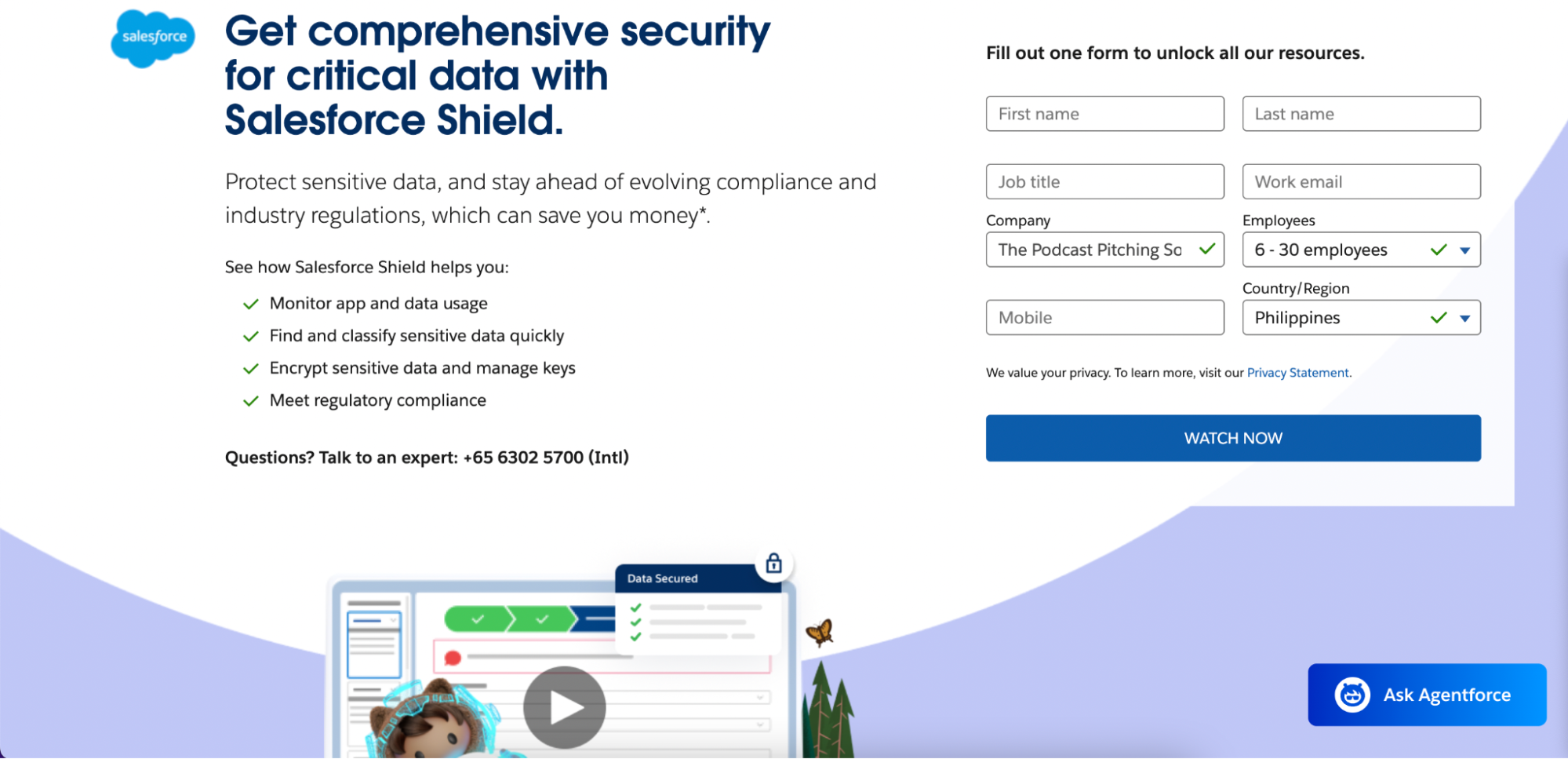
Salesforce is built for organizations with complexity — multiple teams, territories, products, and massive lead data volumes. It supports advanced forecasting, AI-driven insights and high-level automation.
- Pros: Best-in-class automation, rich ecosystem, enterprise-grade customization.
- Cons: Setup and cost are significant; may require dedicated admin resources.
5. BIGContacts – Best for Ease of Use and Budget-Friendly
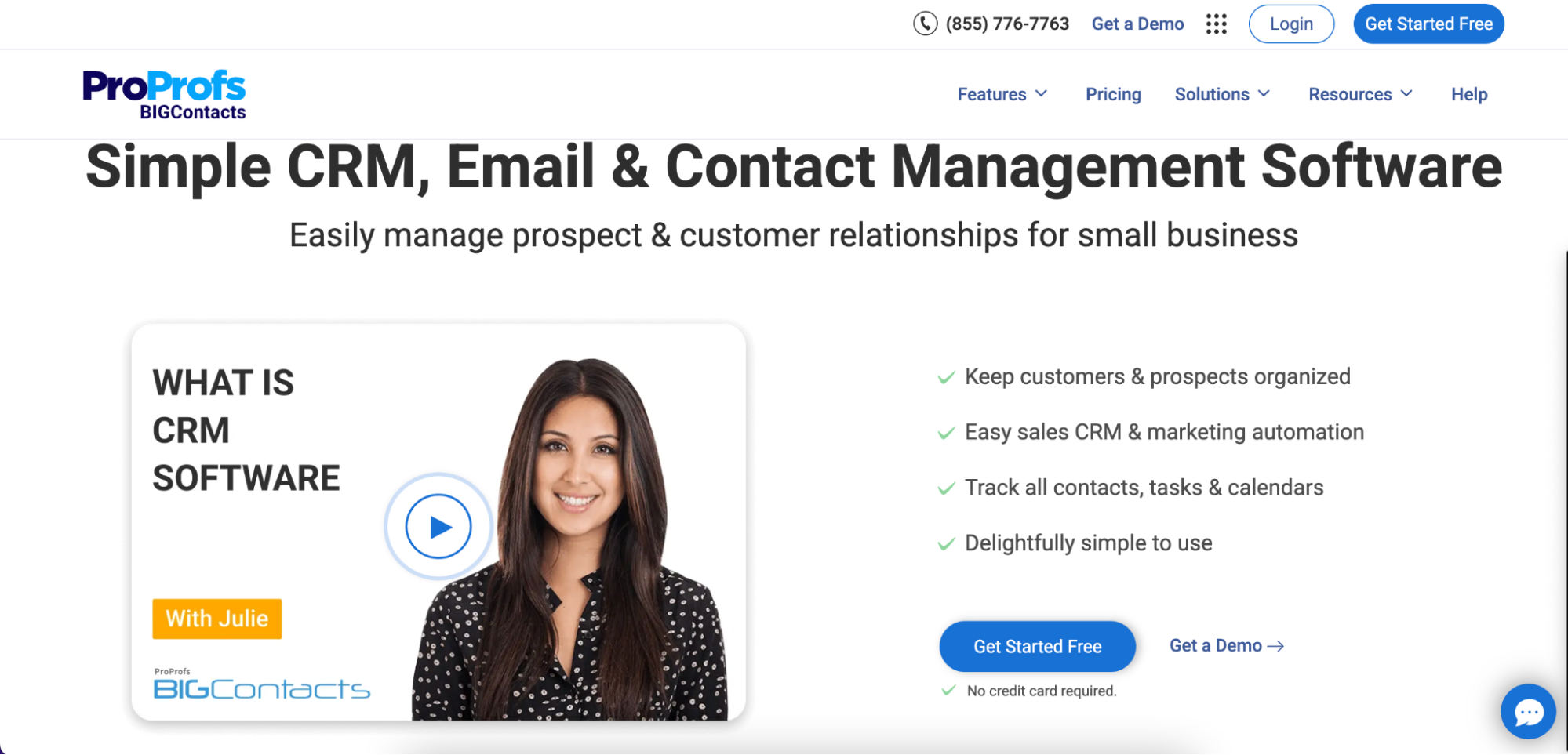
For smaller teams seeking the best lead management software with a minimal learning curve, BIGContacts offers simplicity. It combines CRM with email marketing, reminders, and basic automation — great for getting started.
- Pros: Quick onboarding, affordable, and combined CRM + email functionality.
- Cons: Less powerful analytics, fewer advanced features compared to larger platforms.
6. Freshsales – Best for AI-Assisted Selling

Freshsales stands out for its integration of artificial intelligence into lead scoring and outreach. It includes built-in dialer capability, helping sales reps prioritize potential customers effectively.
- Pros: Fast setup, strong AI features for automation.
- Cons: Some premium features are reserved for higher-tier pricing.
7. LeadSquared – Best for High-Volume Teams & Real-Time Routing
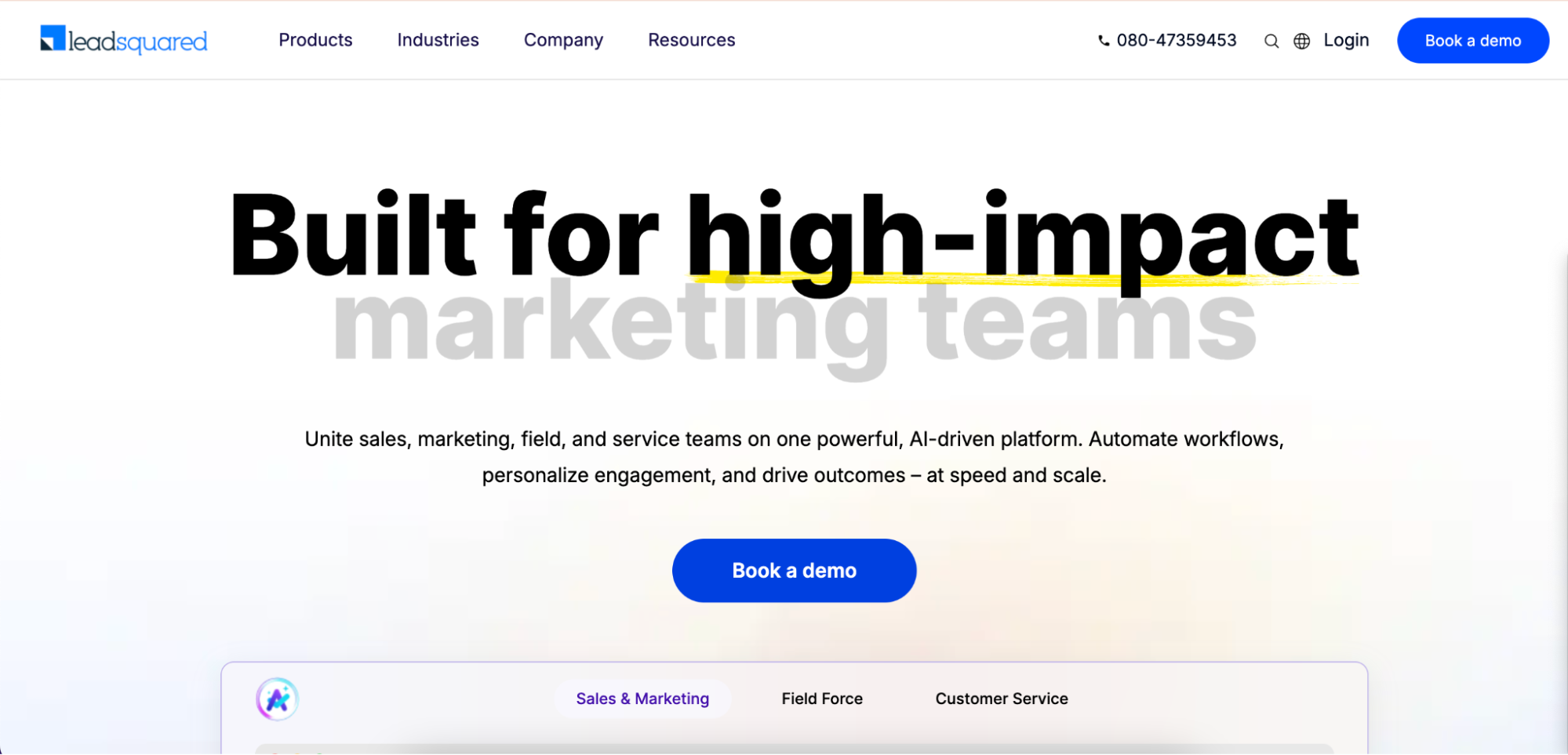
LeadSquared is tailored for organizations with a large volume of leads and need immediate lead routing across teams and channels. Its multi-channel workflow supports fast-moving lead management processes.
- Pros: Real-time assignment, strong for distributed teams, reliable for multi-channel flows.
- Cons: The initial setup can be complex; it is more suitable for medium to large teams than small startups.
8. monday.com CRM – Best for Custom Boards & Workflows
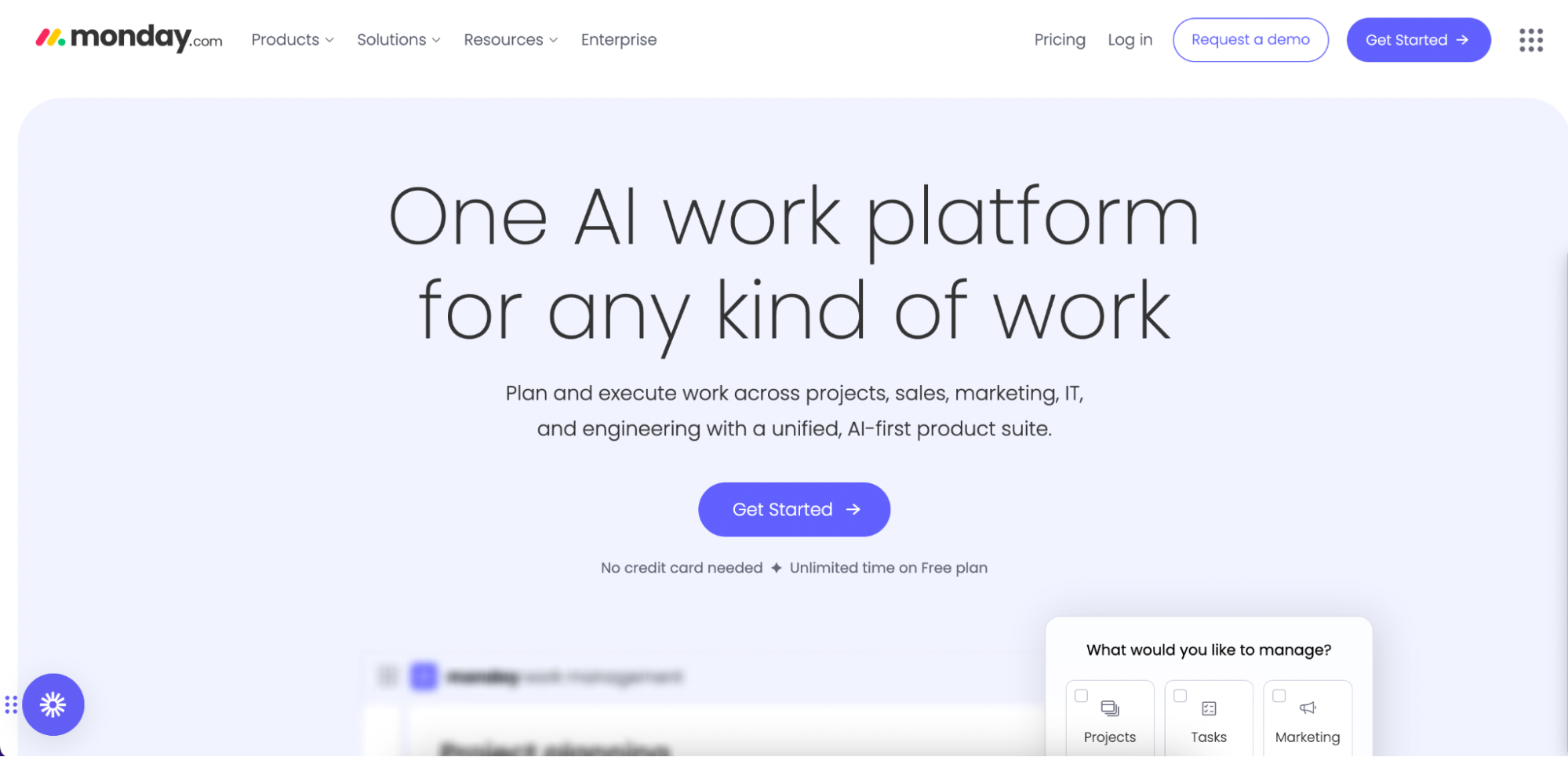
monday.com CRM is built on the idea of “boards” – visual workflows that fit the unique structure of your business. It suits teams that want flexible pipeline management and cross-team visibility with a low-code setup.
- Pros: Highly visual, customizable workflows, suitable for cross-functional teams.
- Cons: Native analytics are limited; may require integrations for the whole lead generation and automation capabilities.
9. Zendesk Sell – Best for Mobile-First Sales Teams
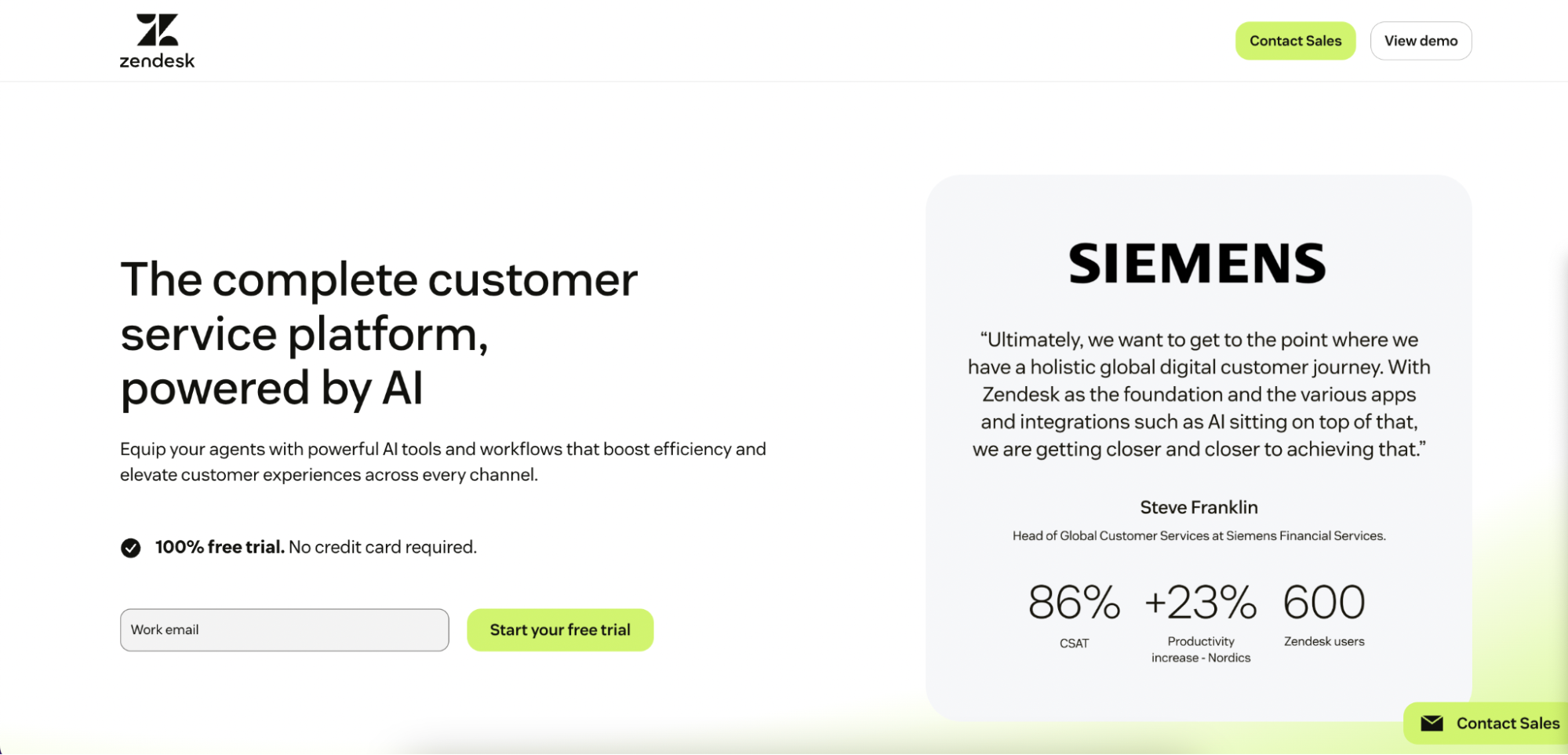
Zendesk Sell is optimized for teams on the move — it’s mobile-friendly, features a clean interface, and is ideal for tracking sales performance on the go. A solid choice for field sales or remote teams.
- Pros: The mobile experience is strong, with simple adoption.
- Cons: Less deep customization than enterprise CRMs; fewer advanced features out of the box for heavy automation.
10. Creatio / Vtiger – Best for Process-Driven Sales & Low-Code Automation
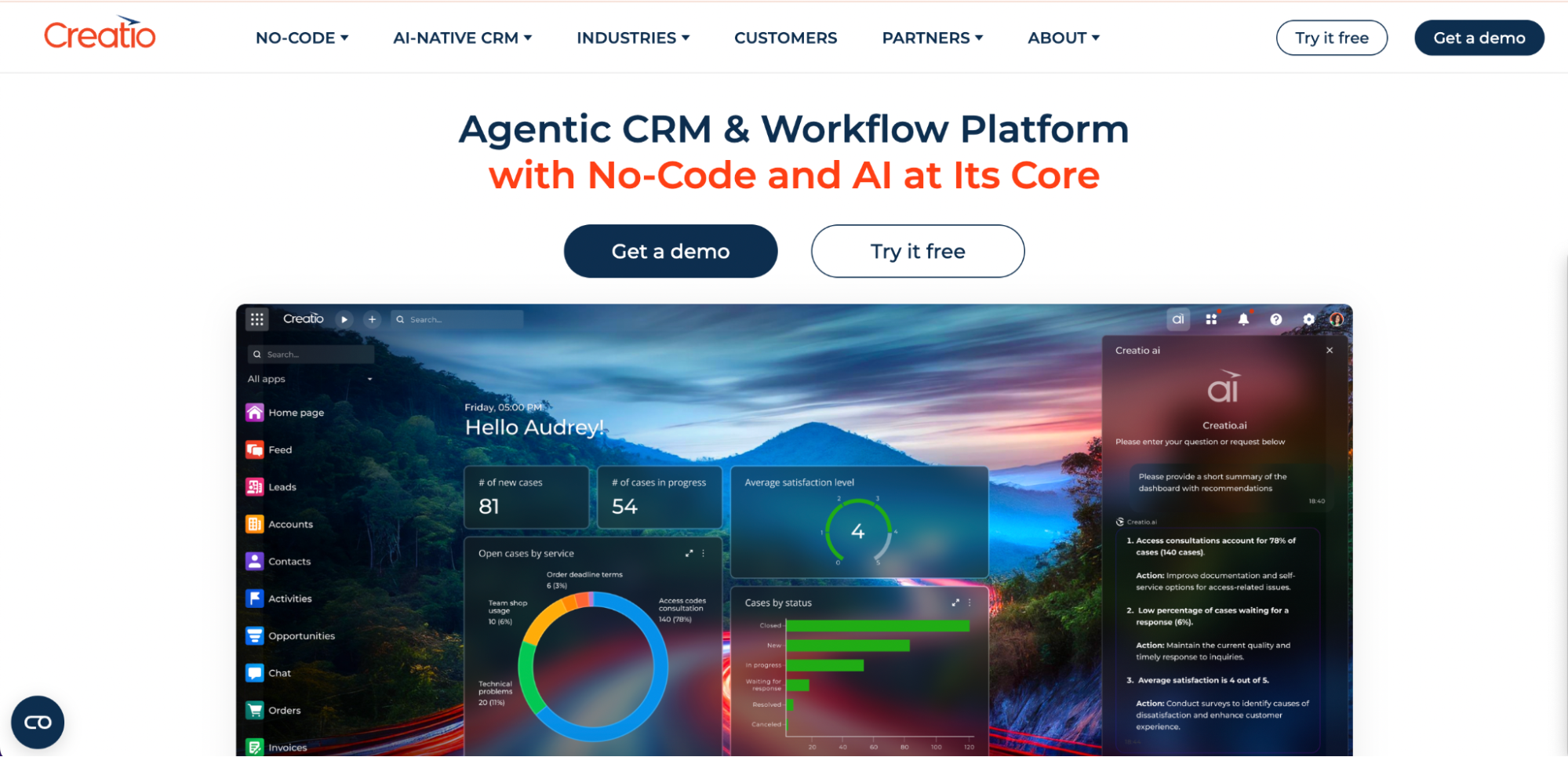
Both Creatio and Vtiger excel for teams with specific process needs — including custom workflows, low-code automation, complex deal models, and in-depth analytics. If your management software needs are specific and your sales process complex, these are worth considering.
- Pros: Highly tailored workflows, low-code capabilities, strong automation potential.
- Cons: Less modern interface, may require customization resources.
These nine (well, ten) platforms represent a cross-section of what the market offers in lead management tools for 2025. Whether your focus is simplicity, scalability, AI, automation or visual pipeline clarity, there is a solution tailored to your team’s size, goals, and budget.
Complementary Lead Management Tools
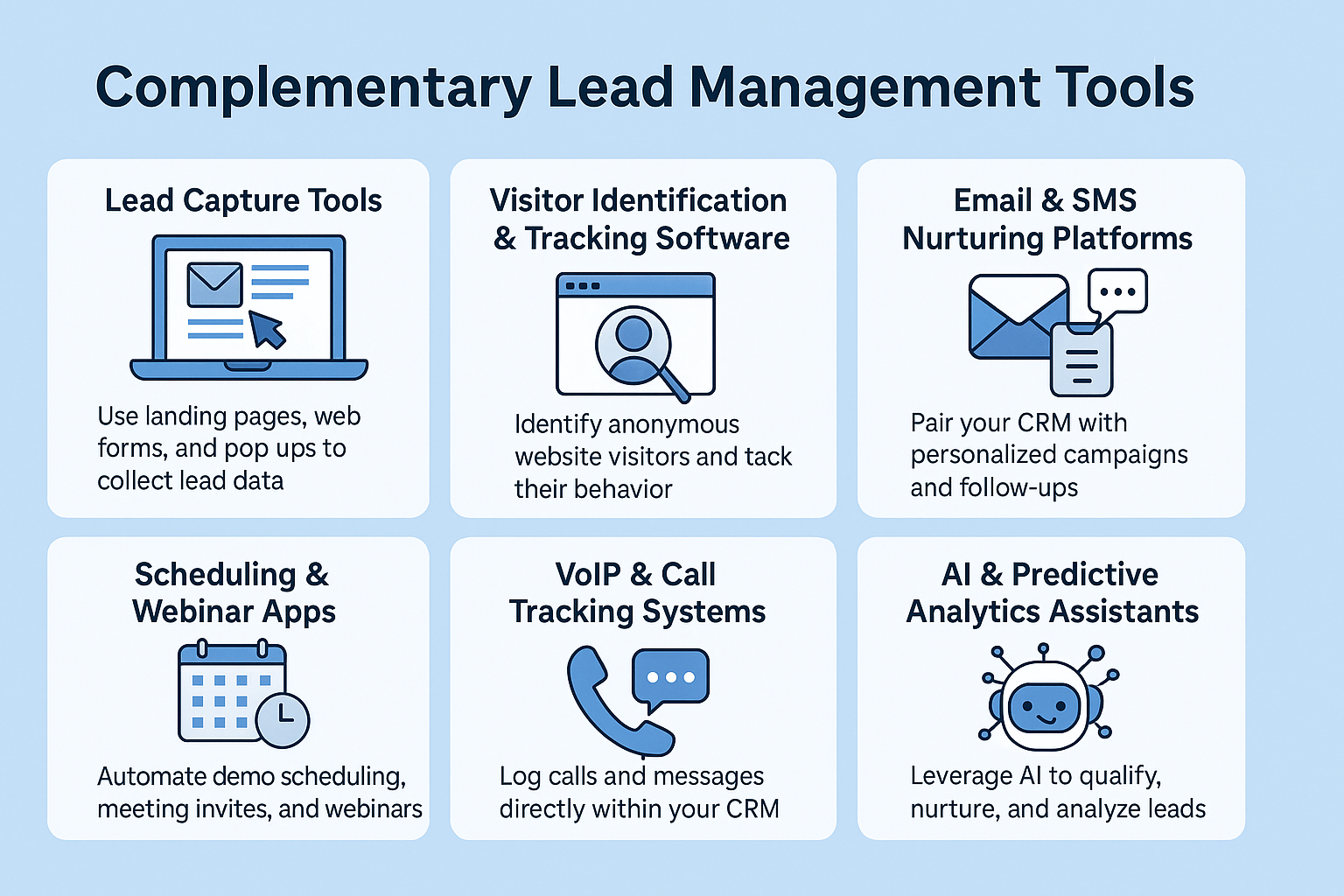
Even the best CRM for lead management can’t do everything on its own. To get the most out of your lead management software, it’s worth connecting it with tools that fill specific gaps — from lead capture to nurturing and reporting. These integrations help you manage leads more effectively and maintain a healthy sales funnel from top to bottom.
Here are a few categories worth adding to your tech stack:
1. Lead Capture Tools
Use landing-page builders, web forms, and pop-ups to collect lead data instantly. Tools like Typeform, Unbounce, or Jotform integrate easily with most CRM lead management systems, making it easier to convert visitors into qualified leads.
2. Visitor Identification & Tracking Software
Platforms such as Leadfeeder or Albacross help identify anonymous website visitors and feed that info directly into your CRM. Combined with lead tracking software, this gives sales reps context about who’s engaging and what they’re viewing.
3. Email & SMS Nurturing Platforms
Pair your CRM with email marketing tools like Mailchimp or ActiveCampaign. These marketing automation platforms help nurture leads<span style=”font-weight: 400;”> through personalized messages, follow-ups, and drip campaigns that guide potential customers through the sales process.
4. Scheduling & Webinar Apps
Tools like Calendly and Zoom streamline demo scheduling, meeting invites, and webinars. They automate key steps in your lead management process, ensuring fast responses and higher conversion rates.
5. VoIP & Call Tracking Systems
Software like Aircall and CallRail logs every call and message directly within your CRM, providing you with complete visibility into the entire customer journey. It also enhances sales performance by allowing managers to monitor conversations for coaching and consistency.
6. AI & Predictive Analytics Assistants
AI tools such as Drift or Conversica act as virtual assistants that nurture leads 24/7. They identify buying signals, schedule meetings automatically, and even qualify prospects before handing them to sales reps — keeping your sales pipeline moving efficiently.
When connected properly, these other lead management tools make your CRM smarter, faster, and more effective — turning it from a simple database into a true sales hub.
How to Choose the Right CRM
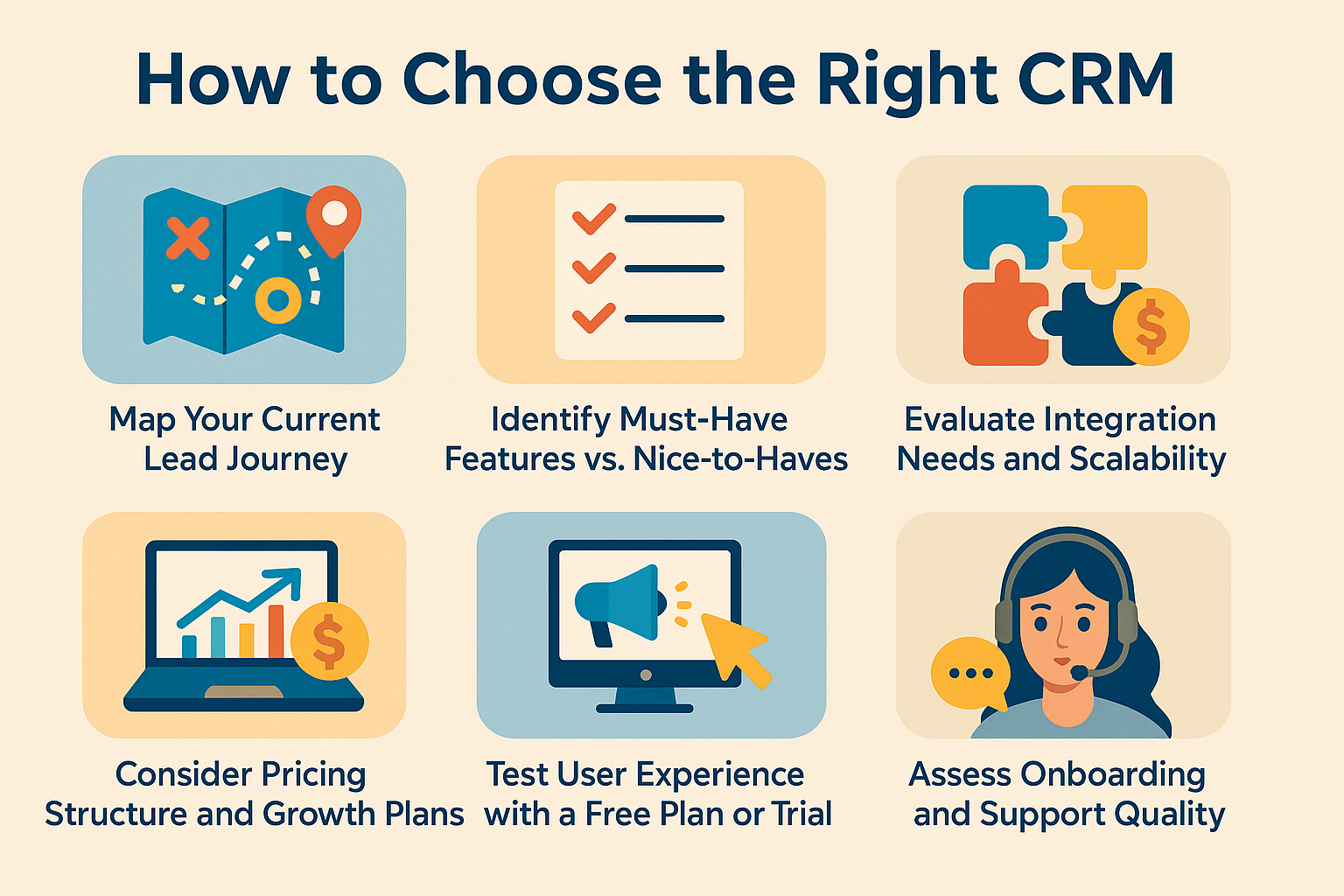
Selecting the best CRM for lead management isn’t about chasing big brand names — it’s about finding a system that fits how your sales teams actually work. A great lead management software platform should help you capture, qualify, and manage leads effortlessly while supporting your long-term goals.
1. Map Your Current Lead Journey
Start by charting your whole lead management process — from lead generation to conversion. This shows where leads drop off and where your current tools fall short.
2. Identify Must-Have Features vs. Nice-to-Haves
List what’s essential for your day-to-day operations. For most teams, that includes lead scoring, pipeline management, automation, and solid reporting dashboards. Optional extras, such as chatbots or advanced forecasting, can be implemented later.
3. Evaluate Integration Needs and Scalability
Your CRM should connect seamlessly with marketing automation software, email marketing tools, billing systems, and your customer service software. Effective integrations ensure data flows seamlessly across your entire customer journey, reducing the need for manual entry.
4. Consider Pricing Structure and Growth Plans
Compare plans carefully. Some CRMs charge by user, while others bill for contacts or add-ons. The right lead management system should fit your budget today and scale with your sales pipeline tomorrow.
5. Test User Experience with a Free Plan or Trial
Most platforms offer a free plan or demo. Use it to test real tasks: add leads, create deals, and generate reports. Your sales reps should be able to navigate and update data without friction.
6. Assess Onboarding and Support Quality
Even the best lead management software fails without proper training. Check the vendor’s onboarding process, tutorials, and live chat support. A responsive provider helps your marketing and sales teams adopt faster and stay aligned.
When you’ve done all six steps, you’ll know which CRM lead management tool truly fits your team — one that simplifies the sales process, supports smarter decisions, and grows with your business.
Implementation & Best Practices
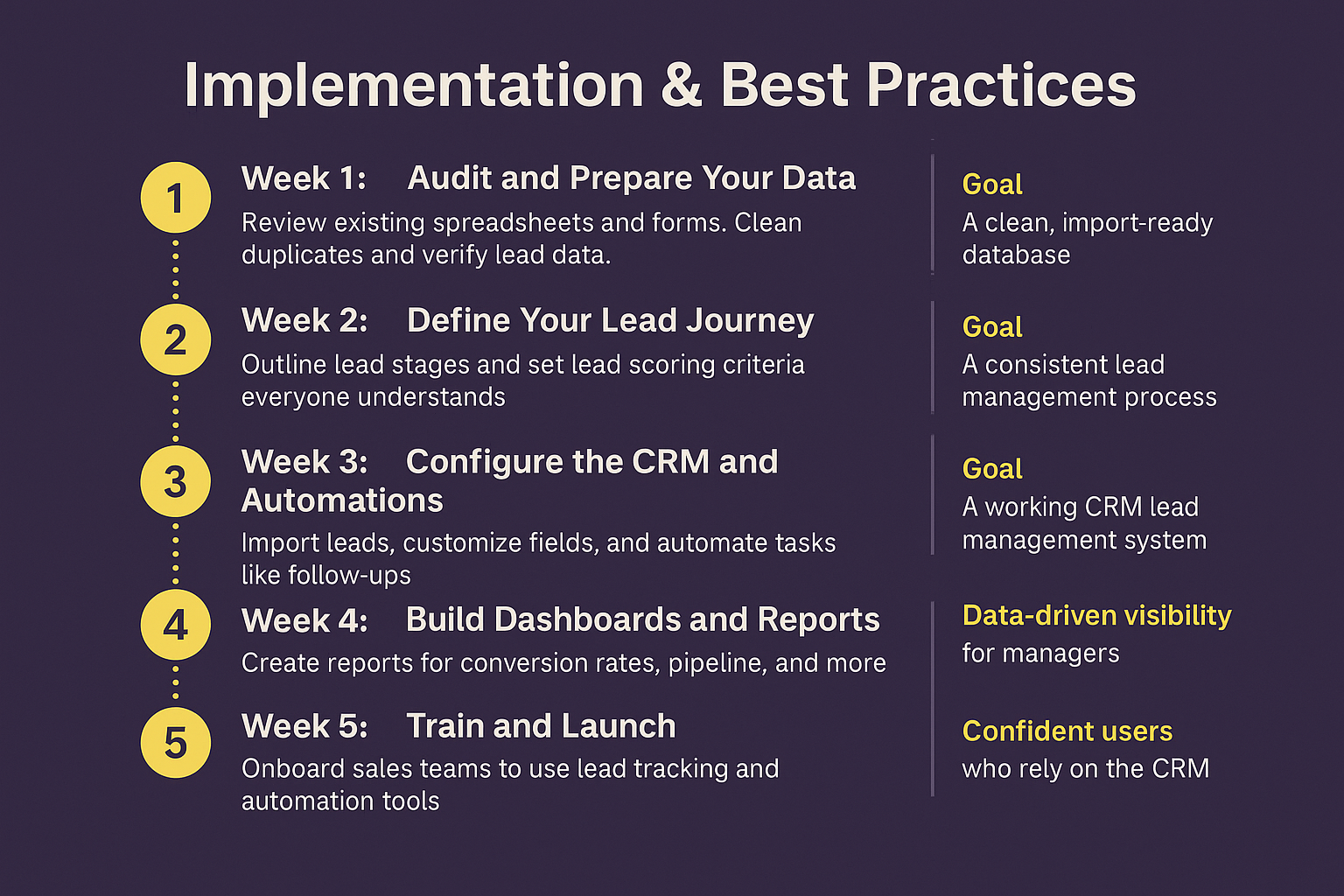
Rolling out the best CRM for lead management isn’t a one-day job — it’s a process. The most successful sales teams treat implementation like a campaign: plan it, phase it, and optimize as they go.
Here’s a realistic week-by-week rollout plan:
Week 1: Audit and Prepare Your Data
Begin by reviewing all existing spreadsheets, inboxes, and forms. Clean up duplicate entries, standardize names, and verify contact details. Accurate lead data ensures your lead management software starts strong and prevents errors later.
Goal: A clean, import-ready database that reflects your accurate sales pipeline.
Week 2: Define Your Lead Journey
Outline the process by which leads transition from lead generation to closure. Create clear definitions for each stage — “New,” “Qualified,” “Proposal,” “Won,” etc. — so every sales rep uses the same language.
Then set up your lead scoring criteria using behavioral or demographic triggers.
Goal: A consistent lead management process that your whole team can follow.
Week 3: Configure the CRM and Automations
Import your leads, customize fields, and set up automatic lead distribution rules. Enable marketing automation features, such as email follow-ups and task reminders, to help reps manage leads more efficiently.
Goal: A working CRM lead management system that handles routine tasks automatically.
Week 4: Build Dashboards and Reports
Create performance dashboards that show conversion rates, deal velocity, and source effectiveness. These visual reports transform your lead management system into a valuable source of insights.
Goal: Data-driven visibility for managers and real-time tracking for reps.
Week 5: Train and Launch
Hold onboarding sessions for your sales teams. Walk through lead tracking, updating deals, and using automation tools. Reinforce consistent data entry and communication habits to ensure adoption.
Goal: Confident users who rely on the CRM daily — not as an extra step, but as the foundation of their workflow.
Week 6 and Beyond: Review, Refine, Repeat
Monitor performance weekly. Identify automation gaps, update pipeline management stages, and review sales performance metrics on a monthly basis to ensure optimal efficiency. Optimization keeps your lead management software aligned with your evolving goals.
Goal: A scalable system that grows smarter over time and continuously supports better conversions.
When you roll out your CRM lead management system in stages, your team learns more quickly, adapts more smoothly, and develops lasting habits. The result? Predictable pipelines, cleaner data, and higher close rates.
Common Mistakes to Avoid (Do’s and Don’ts)
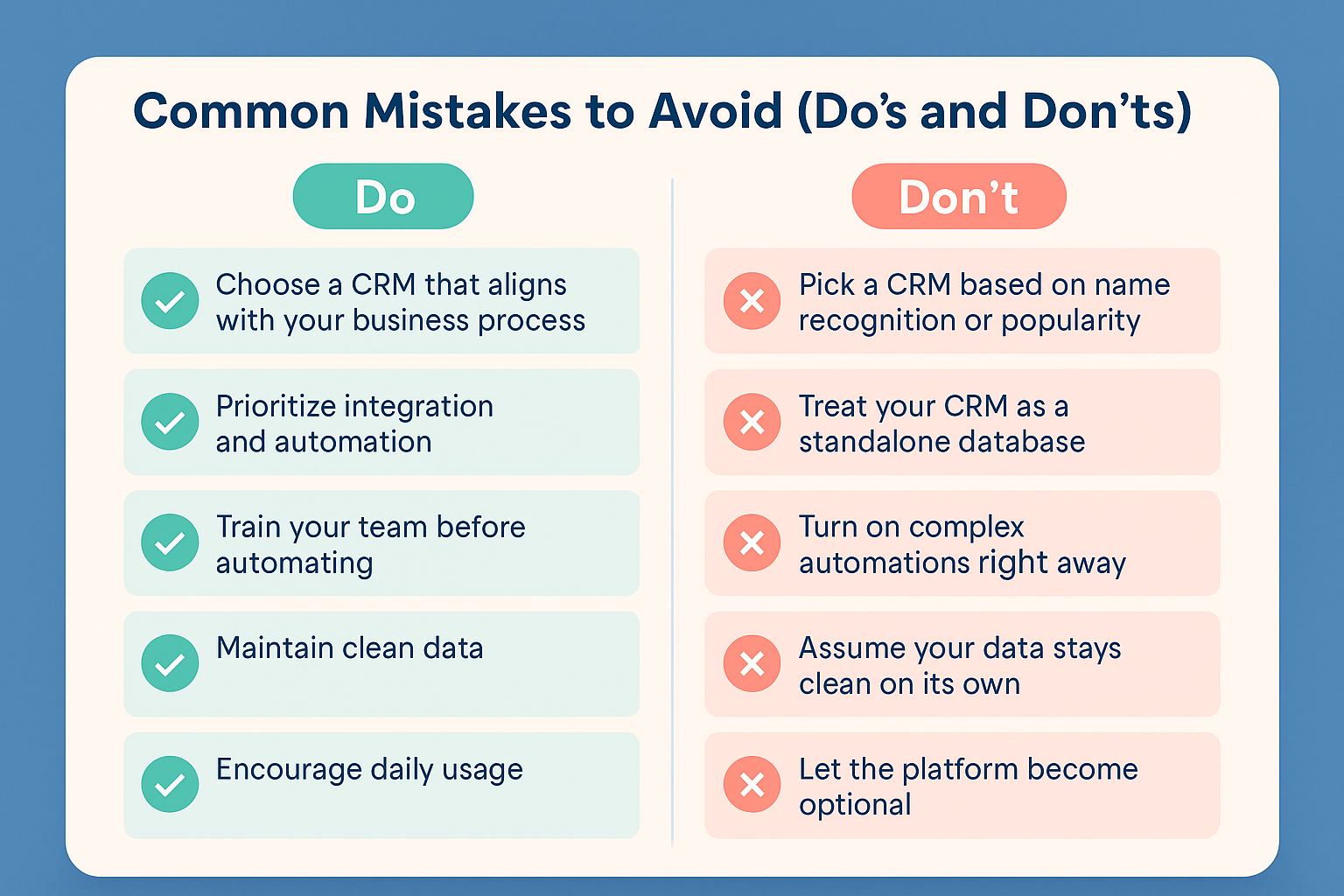
Even powerful lead management software can fall short if teams misuse or underutilize it. Here’s what to do — and what to avoid — when setting up your CRM lead management system.
Do: Choose a CRM that aligns with your business process.
Your sales process is unique. Select a CRM that supports how your sales teams actually work, not just what’s trending. A smaller, more flexible tool often outperforms an overly complicated enterprise platform.
DON’T pick a CRM based on name recognition or popularity. What works for a large corporation might not scale down to your workflow.
DO: Prioritize integration and automation.
Your CRM should sync with your marketing automation software, email marketing tools, and customer service software to streamline the entire customer journey.
DON’T treat your CRM as a standalone database. Without integrations, your team will waste time toggling between platforms and lose track of lead data.
DO: Train your team before automating.
Teach sales reps how to use automation tools — from lead distribution to follow-ups — so they understand the logic behind every workflow.
DON’T turn on complex automations right away. Without training, you’ll risk errors and frustrated users.
DO: Maintain clean data.
Schedule monthly reviews of lead tracking records, run deduplication checks, and validate entries. Good data hygiene ensures that pipeline management and reporting are more accurate.
DON’T assume your data stays clean on its own. Inaccurate or duplicate records can undermine even the most effective CRM for lead management.
DO: Encourage daily usage.
Make CRM adoption part of your team culture. Every deal, call, and note should be logged in your lead management system.
DON’T let the platform become optional. A CRM works only when every team member consistently updates it.
DO: Review insights regularly.
Track key metrics such as close rates, response times, and lead scoring effectiveness. Regular analysis helps refine your lead management process and boost sales performance.
DON’T “set it and forget it.” CRMs evolve as your business grows. Revisit your automations, fields, and reports every quarter to stay aligned with your strategy.
When you apply these do’s and don’ts consistently, your lead management software becomes more than a tool — it turns into a disciplined system that supports predictable growth across your sales pipeline.
Emerging CRM Trends for 2025
The way we use lead management software is changing — not just technically, but strategically. Below is what the 2025 CRM landscape looks like through the eyes of those shaping it: the strategist, the technologist, the seller, and the customer.
The Strategist:
“CRMs are finally bridging the gap between marketing and sales. Instead of being data silos, today’s platforms connect everything — from lead generation to follow-up — in a single, seamless flow. The best part? You can actually measure the entire funnel and see which channels truly drive revenue.”
Takeaway: Expect more substantial alignment between marketing and sales teams, tighter attribution tracking, and more predictable growth models.
The Technologist:
“Automation isn’t new — but now it’s intelligent. AI can score leads, forecast conversions, and even recommend when to call or email. In the best CRM lead management systems, the tech quietly works in the background so reps can focus on selling.”
Takeaway: AI-driven lead scoring and predictive routing are making CRMs more proactive rather than reactive.
The Seller:
“Speed wins. If a lead isn’t followed up on within minutes, someone else will close it. The new CRMs with real-time lead distribution and SLA alerts are game-changers — they make sure no opportunity goes cold.”
Takeaway: Fast response times are becoming the most important metric for sales teams — even more than call volume.
The Data Guardian:
“Privacy-first design is non-negotiable now. Every click, every contact, every consent must be tracked properly. CRMs are building compliance directly into workflows, protecting both lead data and brand trust.”
Takeaway: Future-ready lead management systems must strike a balance between automation and responsibility — compliance will ultimately define credibility.
The Customer:
“What I notice most is personalization. The follow-ups I get actually sound like they were written for me. It’s smart — not creepy.”
Takeaway: Integrated marketing automation is helping brands nurture leads through thoughtful, human-centered engagement on a larger scale.
The future of CRM lead management isn’t just software — it’s collaboration between people, data, and intelligent automation. Businesses that adapt to these changes early will build deeper customer relationships and stay ahead in 2025 and beyond.
Frequently Asked Questions
How is a lead management CRM different from a sales CRM?
What industries benefit the most from lead management CRMs?
Can a CRM integrate with social media and ad platforms?
How does AI improve lead management CRM performance?
What are the biggest signs a business needs a lead management CRM?
Conclusion
After exploring all these options, I’ve realized there’s no single best CRM for lead management — only the best one for your team. What truly matters is how well your system supports the way you work: capturing leads efficiently, tracking conversations, and keeping your sales process consistent from first touch to close.
For me, the best lead management software is one that feels like an assistant, not a chore. It should simplify tasks for sales reps, organize lead data, and give me a clear view of the entire sales pipeline without getting in the way.
If you’re setting up your CRM this year, focus on three things: alignment, automation, and adoption. When your marketing and sales teams share the same insights, when automation handles the busywork, and when everyone actually uses the system — that’s when your CRM lead management truly pays off.
At the end of the day, a CRM isn’t just software. It’s a reflection of how well you understand your customers, your process, and your goals. Choose the one that empowers your team to manage leads more effectively, close deals faster, and build stronger customer relationships every step of the way.



